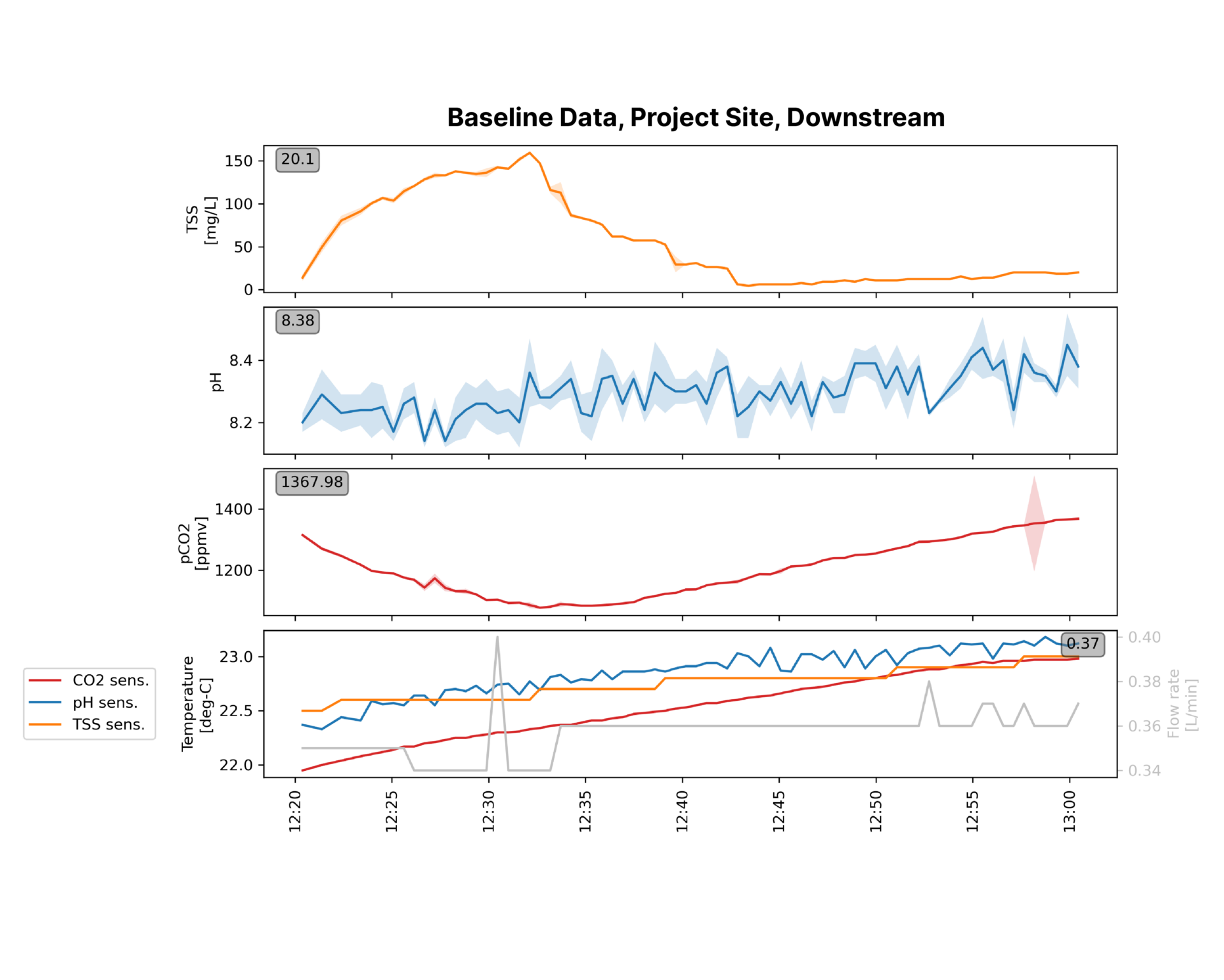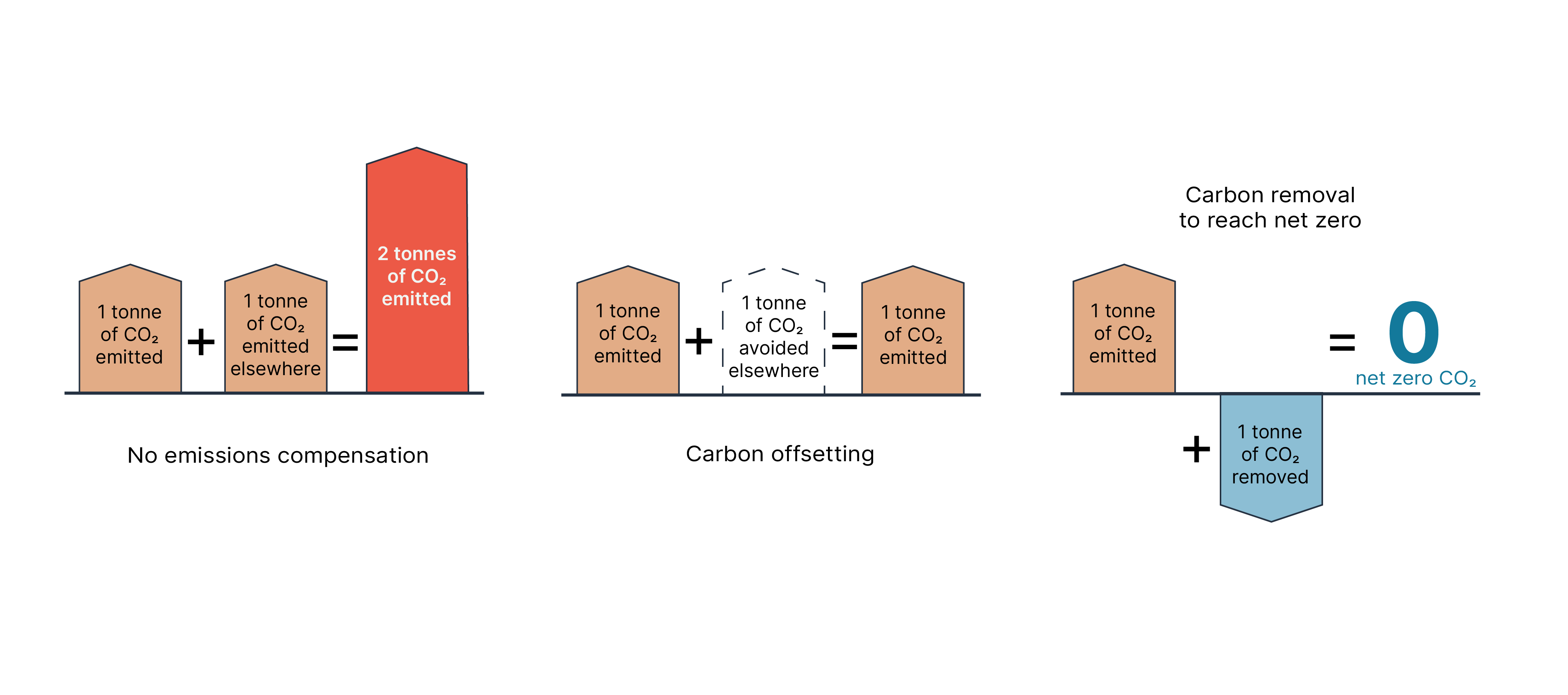Why Do We Need to Value Carbon Removals?
Today’s focus on emissions reduction is absolutely correct and perfectly aligned with our climate goals. But emissions reduction by itself cannot solve our climate crisis – we also need carbon removal. We also need a way to value carbon removal or we will not achieve our objectives.
Carbon removal provides an incalculable benefit to humanity in the long term, but it doesn’t generate money by itself. It costs money to operate carbon removal projects. Building infrastructure, planting forests, developing technology: no matter the type of CDR project, it takes money to do the work, especially at the scales we need CDR to operate.
In the long run, to reach our climate goals, we need to reduce our emissions to nearly zero, and then remove an equivalent amount of carbon to whatever emissions we can’t reduce. On top of that, we need to remove significant amounts of carbon dioxide that has already been emitted, and we need mechanisms that will pay for that work.
Since removing carbon from the atmosphere is almost always more expensive than not emitting it in the first place, a well-designed market system will generally encourage the right behavior: organizations that are mandated to reach net zero will prefer to reduce their emissions as much as possible before they look to removals.
We can place a value on carbon in a number of ways: through a market that allows credit trading, regulations that limit the amount companies can emit, consumer pressure to reduce emissions, incentive structures that reward low emitters, penalty structures that fine high emitters, or even carbon debt systems that force companies to carry past emissions as liabilities.
Whichever structures we establish, it is critical that we evolve emissions regulations and the corresponding carbon markets to create the right outcomes. We must ensure that the carbon credits the markets create are equivalent in value to the emissions they represent, so that the market continues to decrease the amount of CO2 in the air over time.
Offsets Versus Removals
A carbon offset is generated when a project prevents carbon from entering the atmosphere.
If a company is permitted to emit a certain amount of carbon and ends up emitting less than that amount, they can get a credit reflecting the difference. If they prevent carbon from being emitted elsewhere, they can get a credit representing that offset. If they choose to, they can sell either of those credits to another company, allowing the other to emit a little more.
This enables slow-to-adapt industries to keep functioning. But when a credit is sold to another emitter, the emission itself still happens. It’s just a different party doing the emitting.
Carbon removals represent a unit of carbon that was actually taken out of the atmosphere or ocean, rather than a unit that was not yet released.
Just like offsets, they can be purchased by companies looking to reduce their net emissions. Unlike offsets, they actively counteract past emissions.
Planetary’s carbon credits are removals, not offsets.
Removal Credit Quality
Different kinds of removals vary widely in terms of their quality. Carbon removal quality is judged on the following criteria:
- Governance: how well the project is managed
- Additionality: how likely it is that the carbon removal would have occurred anyway
- Durability: how long the removed carbon will be kept out of the atmosphere
- Leakage: how many additional emissions the project causes elsewhere
- Measurability: how likely it is that the removals claimed are measured correctly
- Sustainability: how much non-carbon environmental benefit the project provides
Further, it is important to ensure that each removal is sold and used only once.
Based on these criteria, Planetary’s OAE credits are considered the highest possible quality.
OAE projects also have the potential to be affordable and scalable.
For all these reasons, OAE carbon removals will be a crucial part of a global climate mitigation portfolio.
The Integrity Council for the Voluntary Carbon Market (ICVCM) has published a list of what it considers to be the ten core principles of high-integrity carbon credits. Planetary’s carbon removals are well-aligned with all these principles.

Removal Measurement
To determine the net amount of carbon that a project has removed, the verifier needs to know three things:
- Amount of carbon removed by the project’s activities
- Lifetime carbon cost of the project
- Amount of carbon dioxide that is likely to be re-released after the project is completed
For Planetary projects, the first two are based on measurements taken before, during, and after the removal project, and on the output of ocean models.
The third – the likelihood of reversals – is typically estimated as a percentage of the carbon removed and varies based on the type of removal project. For highly durable CDR methods, reversals are anticipated to be low. Planetary’s ocean alkalinity enhancement, with a durability of approximately 100,000 years, enjoys essentially zero reversals.
All three measurements must be verified by an independent, trusted scientific partner before a carbon credit can be added to a carbon registry. While there are several registries worldwide, a credit may only be issued by one registry – you may not double-count to receive two carbon credits for the same carbon removal action.
Modelling
Planetary’s advanced ocean models simulate aspects of the ocean, from currents and tides to pH changes and upwelling, in order to measure total carbon removals.
These ocean models focus on predicting how long water remains in the surface layer of the ocean, where it can interact with the air. For OAE to be effective, alkalized water needs to remain in this layer for weeks or months, long enough to pull carbon out of the atmosphere. If the treated water sinks too soon, it will not be able to remove as much carbon.
Early in a project’s development, these models are used to identify promising sites for OAE projects, eliminating sites where surface waters tend to sink into the deeper ocean.
Later, the same models can be used to quantify carbon removals.
As the exact efficiency of an OAE addition varies based on day-to-day conditions, particularly wind speed, there is always some uncertainty in predictions of how much carbon a project will remove from the atmosphere.
Once an alkalinity addition has occurred and project operators have collected actual ocean and atmospheric data, that data can be put into the ocean model. The model will then recreate ocean conditions to calculate how much carbon removal occurred with more certainty.
This removal estimate allows carbon registries to accept credits for removal projects.
Planetary’s models are either developed by our own research team or are based on established models developed for the region. As projects proceed, we confirm the accuracy of these models by comparing their predictions to real data, and we work to increase their precision so we can predict changes at a finer granularity.


